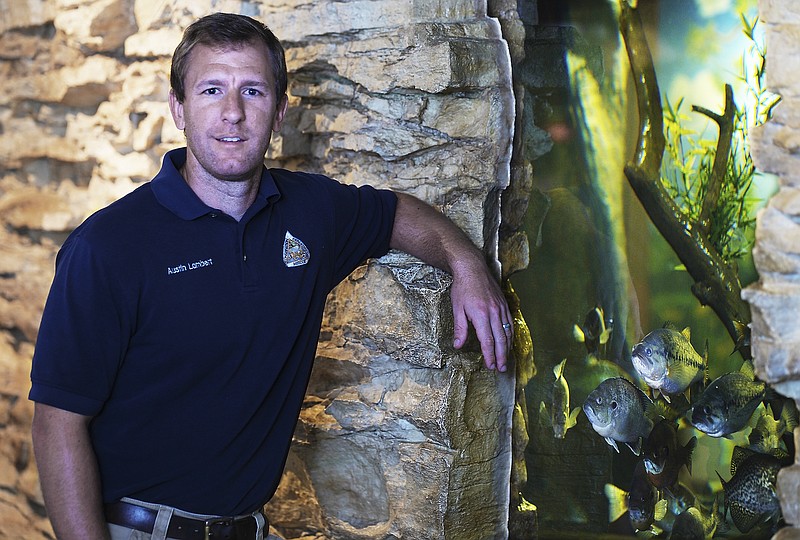There are a lot of interesting things to see at Runge Nature Center.
Monarch butterflies, for instance, which are migrating through the region right now.
Some days, you might even see Austin Lambert gently scooping them up in butterfly nets so they can be tagged and released.
Lambert, a naturalist at the center, presents interpretive natural resource-related programs.
“I’m just trying to get people excited about — and learning more about — nature,” Lambert said. “Besides doing those types of programs, which are for a variety of ages, a variety of demographics, we try to reach everybody.”
The naturalist has been at the center for about three years. He is married and has a young daughter.
Lambert grew up in northern Iowa. His father took him hunting and fishing when he was really young. Lambert found he enjoyed learning about animals.
His passion grew.
And he decided to do something natural resources-related.
He attended Iowa State University and worked as a naturalist in Iowa, Illinois and Alaska before settling in Missouri.
“I really do enjoy sharing my passion for the outdoors with others,” Lambert said. “It’s extremely rewarding when you see the look on the face. You can see that they’ve made some type of connection with nature.”
While still a student, he spent one summer working in Kodiak and another in Juneau, Alaska.
Those king salmon in Alaska have no match, he said.
“I enjoyed the work I did (in Alaska). I took that position so I could go fishing — salmon fishing,” he said. “I like to catch those big guys. The bears and stuff are cool, too, but really I was there for the fish.”
He sent more than 100 pounds of salmon back home.
He thought it was pretty cool that while other students in the dorms were eating ramen noodles, he was eating king salmon.
He eventually landed a part-time job at Powder Valley Conservation Nature Center near St. Louis.
“I spent a year there. That was a good way to get my foot in the door,” Lambert said.
After a year there, the position at Runge popped open.
“I love Jefferson City. I love Runge,” he continued. “This is a good place for me to be, I think.”
Beside the educational programs, Runge offers a lot for the public, he said.
Staff members take a lot of wildlife calls. They also try to resolve questions for the public.
A microscope stands on a table near Lambert’s desk.
“We mostly have this for when people bring in small insects or things people want identified,” he explained. “Some of the features on small insects are hard to see with your naked eye.”
The microscope lets staff zoom in on the object in question. Most of the time, people are just curious about what they’ve found.
Sometimes, they wonder if what they have could be harmful to them or their home.
And sometimes staff just wants to show people something cool. They recently used a document camera to project images of mosquito larvae on a screen.
It was cool and gross.
“In some cases, seeing that might make you less scared of them,” he said. “In the case of the mosquito larvae, I’m not sure if that’s true.”
Some identifying characteristics on insects are obvious.
For instance, differences between female and male monarch butterflies are easy to spot, if you know what you’re looking for.
Monarchs have very dark veins that run through their wings. In the males, the veins are thin. In the females, they are thicker. Also, males have two dark spots on their wings.
With children in schools, things have slowed down for the season. They still get four or five groups of children a week, down from several groups a day, but staff members have a little more time to prepare future programs.
“I spend a lot of time out on the trails, trying to learn more about the different resources and experiencing things out there,” Lambert said. “That way, I can better inform the public of things that are happening. It helps to generate ideas when I spend some time outside. I can see what’s happening outside and what people might be interested in.”

